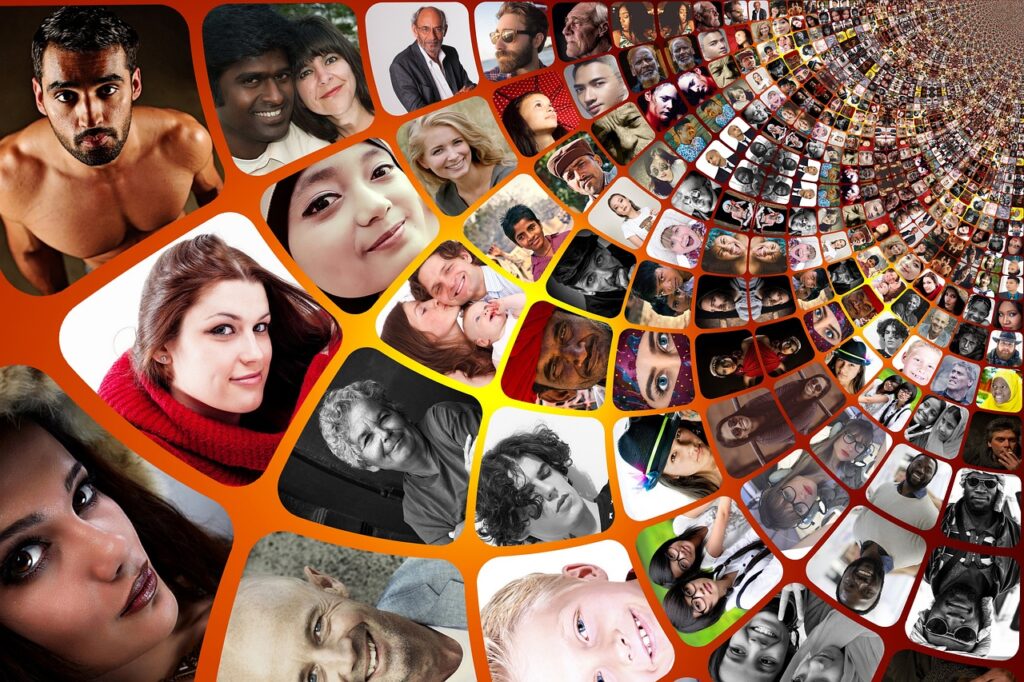For Christians, Easter is the central event of their faith. But where does the word Easter come from, how is the date determined, and what is it about the bunny and the eggs?
For Christians, Easter, the resurrection of Jesus, is the central event of their faith. Death is not seen as an end but as a new beginning of life. Life triumphs over death, truth over lies, justice over injustice, and love over hate. The Easter Bunny came late, around 1680, as a folk custom.
The following day, Good Friday, Christians commemorate the crucifixion of Jesus. “Silent Friday” ushers in the Easter celebrations. For Protestant churches, Good Friday is the highest holiday of the year.
The religious significance of the Easter holiday
In Christian doctrine, the word “Easter” derives from the East. The gazes of the women who stood at the empty tomb of Jesus turned eastward toward the sunrise. From there, they believed Jesus was coming back to earth. Pagan origin (but there are different doctrines about this) could be “Eoastrae,” the Anglo-Saxon name of the fertility goddess.
Determination of the Easter period
The Easter period lasts 50 days until Pentecost. After the introduction of the Gregorian calendar (1582 by Pope Gregory XIII), the Western Church agreed to celebrate Easter on the first Sunday following the first full moon after the beginning of spring.
Lent precedes Easter
During Lent or Passiontide, man is supposed to reflect on the actions of Jesus. It is the time of suffering of the Son of God, in which the religious bond of Christians should be expressed more strongly. Lent lasts 40 days, from Ash Wednesday to Holy Saturday. Jesus also fasted for 40 days during his wanderings in the desert. The custom has existed since the 4th century AD. According to ancient tradition, meat, wine, milk, butter, cheese and eggs were abstained except on Sundays.
The Holy Week
The week immediately preceding Easter is Holy Week. Kar comes from the Old German word “kara” or “chara” and means sorrow, lament or mourning. The week begins with Palm Sunday. Christians bless palms or boxwoods to commemorate Jesus’ solemn entry into Jerusalem. Maundy Thursday marks Jesus’ Last Supper with his 12 disciples. Good Friday, according to tradition, is the anniversary of Jesus’ death, crucifixion. Easter is begun with a service on Holy Saturday evening, followed by the Easter Vigil, commemorating the resurrection of Jesus Christ.
The Easter holidays
According to the Christian religion, Jesus rose from the dead on Easter Sunday. In Germany, Good Friday and Easter Monday are public holidays nationwide.
The Easter week
Easter Week (the Easter Octave) is the week from Easter Sunday to the following Sunday. The Saturday after Easter Monday is Easter Saturday (it is often colloquially confused with Holy Saturday). Easter Weekends with “White Sunday”; on this day, First Communion is traditionally celebrated in white vestments.
The Easter bunny as egg bringer
The Easter bunny has only been known as an Easter egg bringer for about 300 years. The custom originated in Alsace, the Palatinate and the Upper Rhine. The first documents are handed down from the year 1678. In the previous century, the Easter Bunny was still unknown in many areas, especially the countryside. Why the nimble hare and not the chicken brings the eggs were more difficult to explain there, especially to children, than in the cities.
In Byzantium, the hare was a symbol of Christ in animal symbolism. In early Christianity, however, it was also considered a symbol of fornication because of its fertility. In pagan mythologies, Master Lamp played an important role. He was the sacred animal of the Germanic goddess of spring, Ostara.
The Easter egg
In the history of man, we meet the egg very early. In ancient Rome, eggs were placed in the grave of the deceased. In the Middle Ages, eggs were given to the landlord at Easter as payment in kind for leased land (“interest egg”). The custom of painting eggs and giving them as gifts probably arose because it symbolized life in early Christianity. Since the 13th century, red has been considered the Easter egg colour in the West. Red stands for the blood of Jesus. In Eastern Europe, gold is the predominant colour, which is supposed to express preciousness.
The Easter fire
The Easter fire stands for the sun. It is the center of our lives – without the sun, there is no life. Easter fires are used to welcome spring in the countryside. In the 8th century France, the custom was then transferred to Christianity.
The Christian Easter fire is lit and consecrated in front of the church on Easter Saturday, at the beginning of the Easter Vigil liturgy. The Easter candle is lit at the fire and carried in a solemn procession into the still dark church.
- Mag. Hector Pascua/picture: Bild von Gerd Altmann auf Pixabay
This post has already been read 1303 times!



